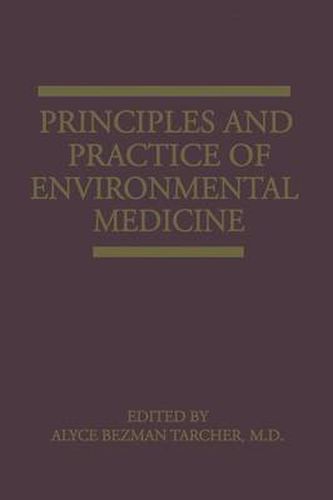Readings Newsletter
Become a Readings Member to make your shopping experience even easier.
Sign in or sign up for free!
You’re not far away from qualifying for FREE standard shipping within Australia
You’ve qualified for FREE standard shipping within Australia
The cart is loading…






This title is printed to order. This book may have been self-published. If so, we cannot guarantee the quality of the content. In the main most books will have gone through the editing process however some may not. We therefore suggest that you be aware of this before ordering this book. If in doubt check either the author or publisher’s details as we are unable to accept any returns unless they are faulty. Please contact us if you have any questions.
Throughout the world, scientists and the general with environmental illness. Part II presents an over public are concerned about the adverse effects of view of chemical and physical agents commonly toxic agents found in contaminated air, water, food, found in contaminated air, water, food, and soil. and soil. In the past, attention has focused on haz The problem of hazardous wastes is also discussed. ards originating in the workplace. As a consequence, Part III characterizes the body’s defense against occupational medicine has become a well-recognized such exposure. Defenses at the portals of entry are and established clinical discipline. Much less atten discussed, with emphasis placed on the role of tion has been paid to nonoccupational hazards. There nutrition. Detoxication and immunologic defense is a growing awareness, however, of the dangers of mechanisms are described. Part IV indicates the exposure to toxic chemical and physical agents in importance of and provides instruction on the the homes, community, and general environment, method of including occupational and environmen especially for the fetus, the infant, the very young, tal factors in the routine medical history. The role of the elderly, and the chronically ill, those most sus enhanced susceptibility as a factor in an individual’s ceptible. Environmental medicine, fOCUSing on the response to toxic exposure is discussed.
$9.00 standard shipping within Australia
FREE standard shipping within Australia for orders over $100.00
Express & International shipping calculated at checkout
Stock availability can be subject to change without notice. We recommend calling the shop or contacting our online team to check availability of low stock items. Please see our Shopping Online page for more details.
This title is printed to order. This book may have been self-published. If so, we cannot guarantee the quality of the content. In the main most books will have gone through the editing process however some may not. We therefore suggest that you be aware of this before ordering this book. If in doubt check either the author or publisher’s details as we are unable to accept any returns unless they are faulty. Please contact us if you have any questions.
Throughout the world, scientists and the general with environmental illness. Part II presents an over public are concerned about the adverse effects of view of chemical and physical agents commonly toxic agents found in contaminated air, water, food, found in contaminated air, water, food, and soil. and soil. In the past, attention has focused on haz The problem of hazardous wastes is also discussed. ards originating in the workplace. As a consequence, Part III characterizes the body’s defense against occupational medicine has become a well-recognized such exposure. Defenses at the portals of entry are and established clinical discipline. Much less atten discussed, with emphasis placed on the role of tion has been paid to nonoccupational hazards. There nutrition. Detoxication and immunologic defense is a growing awareness, however, of the dangers of mechanisms are described. Part IV indicates the exposure to toxic chemical and physical agents in importance of and provides instruction on the the homes, community, and general environment, method of including occupational and environmen especially for the fetus, the infant, the very young, tal factors in the routine medical history. The role of the elderly, and the chronically ill, those most sus enhanced susceptibility as a factor in an individual’s ceptible. Environmental medicine, fOCUSing on the response to toxic exposure is discussed.